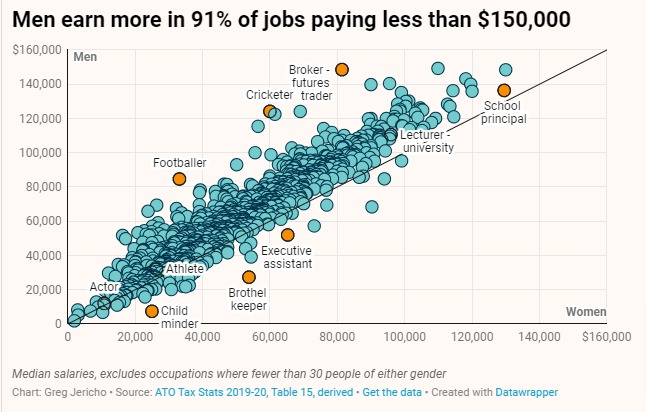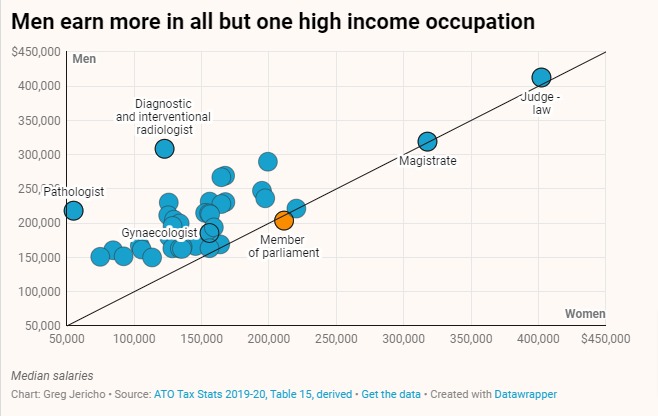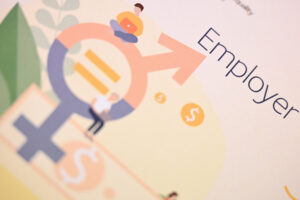The 2019-20 taxation statistics released this week by the ATO provide a plethora of data that reveals with precision the salaries of people by location, occupation age and importantly, gender.
The 2019-20 taxation statistics released this week by the ATO provide a plethora of data that reveals with precision the salaries of people by location, occupation age and importantly, gender.
Labour market and fiscal policy director, Greg Jericho, undertook a deep dive into the data. He notes in his column in Guardian Australia that in 91% of over 1,000 separate occupation groups from Nightclub DJ through to Magistrates and Judges, men have a higher median income than do women.
The data reveals that women are less likely to work in higher paying occupations, and perhaps more damning those occupations with high levels of female participation are more likely to be low paid than are jobs which are mostly done by men.
It is clear that work traditionally done by women is much lower paid than stereotypically traditional male jobs.
But it is not just those occupations where the imbalance occurs. Even in jobs where women are the majority of workers, men will likely have a higher median salary and be more likely to be paid over $90,000 a year and be within the top two tax brackets.
Women for example make up 57% of a journalists, and yet account for just 46% of all journalists earnings between $90,000 and $180,000 and a mere 36% of those earning above $180,000.
The data highlights that the gender pay gap is not just about being paid the same hourly rate for the same work, but who gets the opportunity to work more hours, and who is more likely to be given roles that pay higher wages.
It reveals a deep structural issue within our economy in which even in jobs largely done by women, the men in those occupations will most likely be paid more.


Between the Lines Newsletter
The biggest stories and the best analysis from the team at the Australia Institute, delivered to your inbox every fortnight.
You might also like
Analysis: Will 2025 be a good or bad year for women workers in Australia?
In 2024 we saw some welcome developments for working women, led by government reforms. Benefits from these changes will continue in 2025. However, this year, technological, social and political changes may challenge working women’s economic security and threaten progress towards gender equality at work Here’s our list of five areas we think will impact on
Go Home on Time Day 2024: Exposing the $91 billion rip-off smashing exhausted Aussie workers
Despite new Right to Disconnect laws coming into force earlier this year, new research reveals Australians are still working an average five weeks’ unpaid overtime each year.
Ensuring workers’ safety in the climate crisis
As I watched the fires in Los Angeles unfold in January this year, my mind of course reflected on the 1999-2000 Black Summer bushfires in Australia. Both these seasons have wrought significant damage to humans and other animals, and to land, infrastructure and property. There has been a huge personal, collective and financial toll involved.



